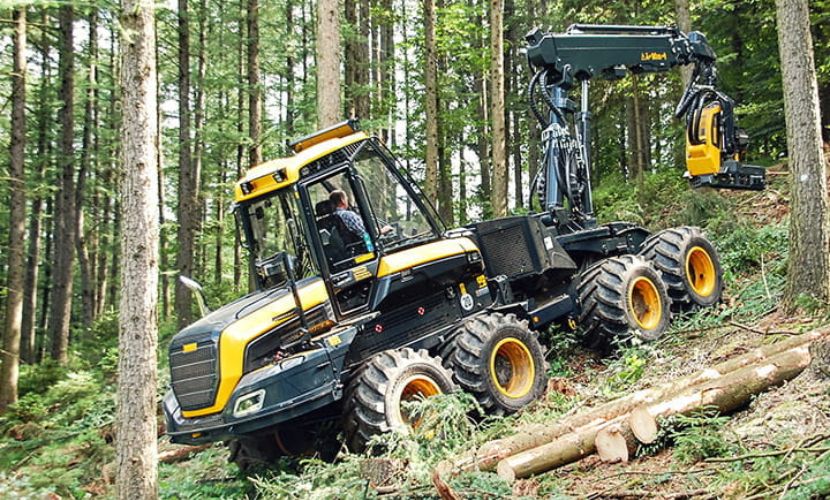Forestry tires play a crucial role in enabling efficient operations across forestry and logging industries worldwide. These specialized tires are designed to withstand challenging terrains, ensuring optimal performance and durability in rugged environments. As the forestry sector expands globally, the demand for advanced forestry tires continues to grow, driven by technological advancements and increasing mechanization.
Forestry Tire Market Size and Growth
The forestry tire market is poised for substantial growth from 2024 to 2032. With a compound annual growth rate (CAGR) projected to be 4.8%, the market is expected to reach USD 638.14 million by 2032. This growth is fueled by escalating forestry activities, rising investments in sustainable forestry practices, and the need for enhanced equipment efficiency.
Key Trends Shaping the Market
- Technological Advancements: Ongoing innovations in tire materials and designs are enhancing tire performance, durability, and load-bearing capacities, catering specifically to forestry applications.
- Shift Towards Sustainable Practices: Increasing awareness about environmental conservation is driving the adoption of eco-friendly tires that minimize soil compaction and reduce carbon footprint.
- Rise in Mechanization: Growing mechanization in forestry operations, particularly in emerging economies, is boosting the demand for specialized forestry equipment, including tires.
- Integration of IoT and AI: The integration of Internet of Things (IoT) and Artificial Intelligence (AI) in tire manufacturing is facilitating predictive maintenance and optimizing tire performance in challenging environments.
Forestry Tire Industry Segmentation
The forestry tire market is segmented based on several key factors that define its diverse landscape and applications within the forestry and logging industries. Understanding these segments provides insights into the specialized needs and technological advancements driving market growth.
By Tire Type
Forestry tires are categorized into various types based on their design, construction, and intended use in different forestry applications:
- Pneumatic Tires: These tires feature air-filled cavities, providing cushioning and flexibility essential for navigating rough terrain and absorbing shocks during logging operations.
- Solid Rubber Tires: Known for their durability and resistance to punctures, solid rubber tires are ideal for heavy-duty applications such as skidders and loaders in demanding forestry environments.
- Bias Ply Tires: Constructed with overlapping layers of cord fabric arranged at alternate angles, bias ply tires offer robustness and are preferred for their affordability and resilience in rugged conditions.
- Radial Tires: Featuring radial ply construction with cords running perpendicular to the tire's circumference, radial tires offer superior traction, fuel efficiency, and longer lifespan compared to bias ply tires.
By Application
Forestry tires serve diverse applications within forestry operations, each requiring specialized features to optimize performance and productivity:
- Harvesters: These machines are equipped with forestry tires designed to support heavy loads and provide stability while harvesting timber in challenging terrain.
- Forwarders: Forwarders transport felled trees from the cutting site to the collection point, requiring tires that minimize ground disturbance and ensure efficient movement.
- Skidders: Skidders utilize tires with aggressive treads and strong sidewalls to grip the ground and drag felled trees across uneven surfaces without slippage.
- Feller Bunchers: These specialized machines combine cutting and gathering functions, necessitating tires that offer precise control, stability, and durability in dense forests.
- Loaders: Forestry loaders handle tasks such as loading and unloading logs, requiring tires capable of withstanding heavy loads and providing excellent traction on soft and muddy terrain.
Get a Free Sample Report with Table of Contents
By Region
The forestry tire market exhibits regional variations influenced by factors such as climate, forestry practices, and economic conditions:
- North America: Dominated by the U.S. and Canada, North America boasts extensive forestry operations, driving demand for technologically advanced tires that enhance efficiency and minimize environmental impact.
- Europe: Scandinavian countries like Sweden and Finland lead the European market, characterized by sustainable forestry practices and stringent environmental regulations that favor eco-friendly tire solutions.
- Asia Pacific: Rapid industrialization and increasing investments in forestry infrastructure in countries such as China, India, and Australia are fueling demand for robust forestry tires capable of supporting heavy-duty machinery in diverse terrains.
- Latin America, Middle East, and Africa: These regions are witnessing growing forestry activities supported by government initiatives promoting sustainable forestry practices, thereby stimulating demand for specialized forestry tires.
Forestry Tire Market Overview
North America currently leads the forestry tire market, driven by extensive forestry activities in Canada and the United States. Europe follows closely, with significant demand arising from Scandinavian countries known for their extensive forestry operations. The Asia Pacific region is expected to witness the fastest growth, supported by increasing investments in forestry infrastructure in countries like China, India, and Australia.
Forestry Tire Market Forecast Period 2024-2032
During the forecast period, the forestry tire market will continue to expand robustly, propelled by:
- Government Initiatives: Supportive policies promoting sustainable forestry practices and technological advancements.
- Market Consolidation: Strategic collaborations, mergers, and acquisitions among key players to strengthen market presence and expand product offerings.
Key Players
Prominent players in the forestry tire market include:
- Continental AG
- Bridgestone Corporation
- Nortec Company
- Michelin Retread Technologies, Inc.
- Apollo Tyres Ltd.
- Yokohama TWS Holding AB
- Guizhou Tyre Co., Ltd. (GTC Group)
- Interco Tire Corporation
- JK Tyre & Industries Ltd.
- Titan International, Inc.
These companies are actively investing in research and development to introduce advanced forestry tire solutions, focusing on durability, performance, and environmental sustainability.

